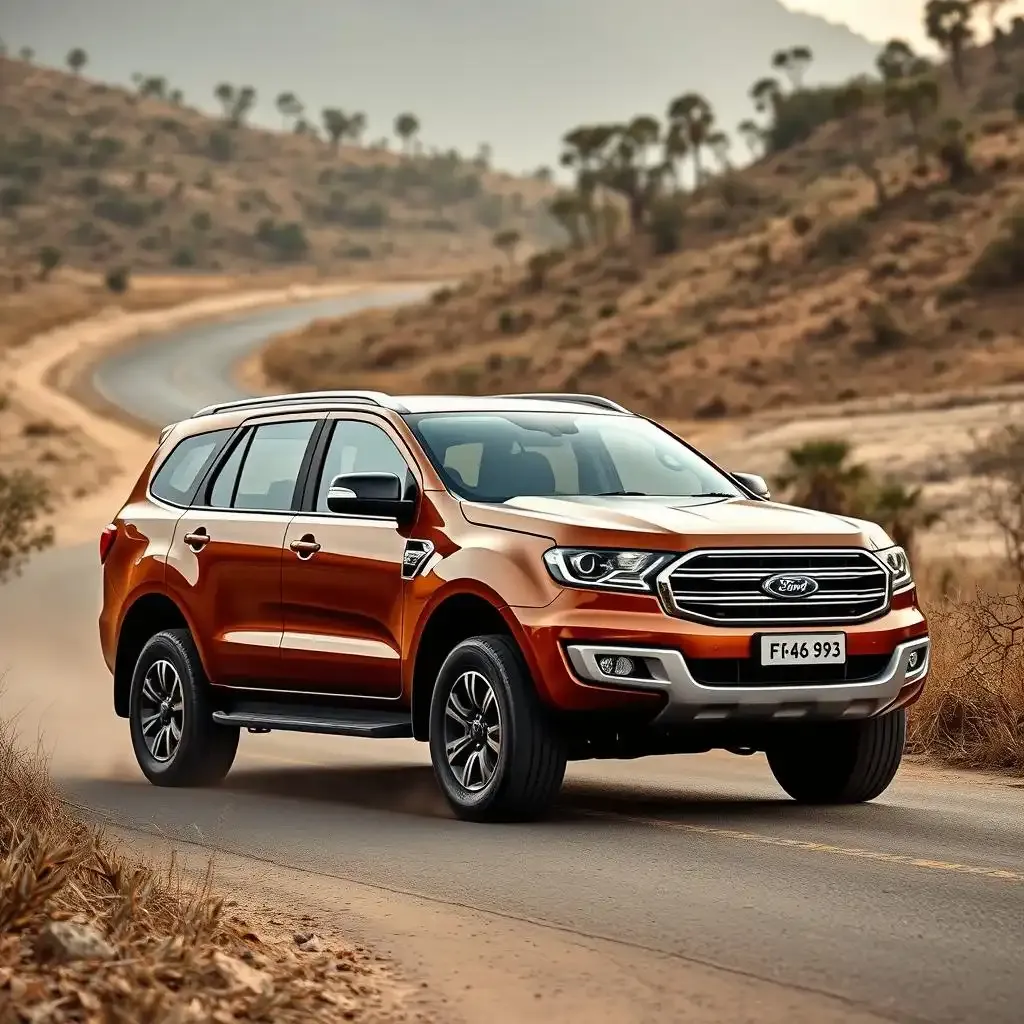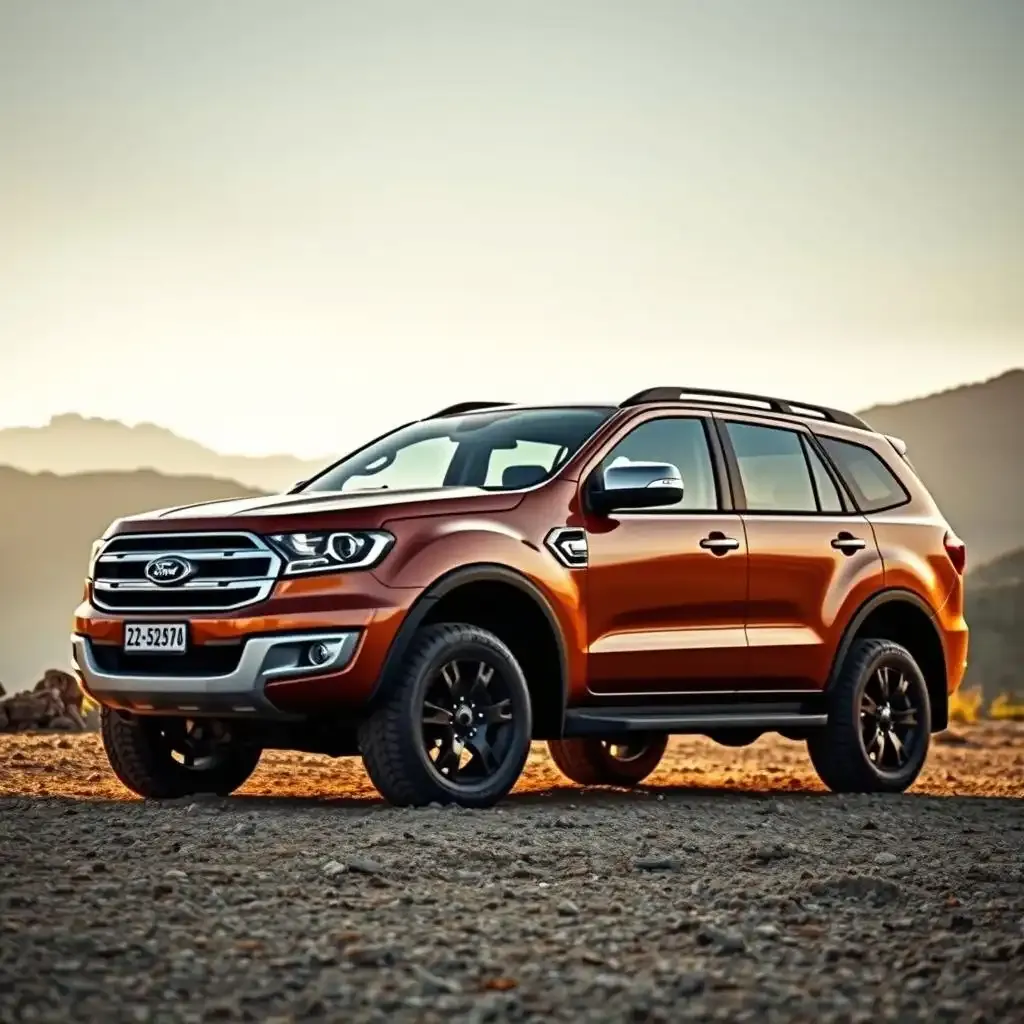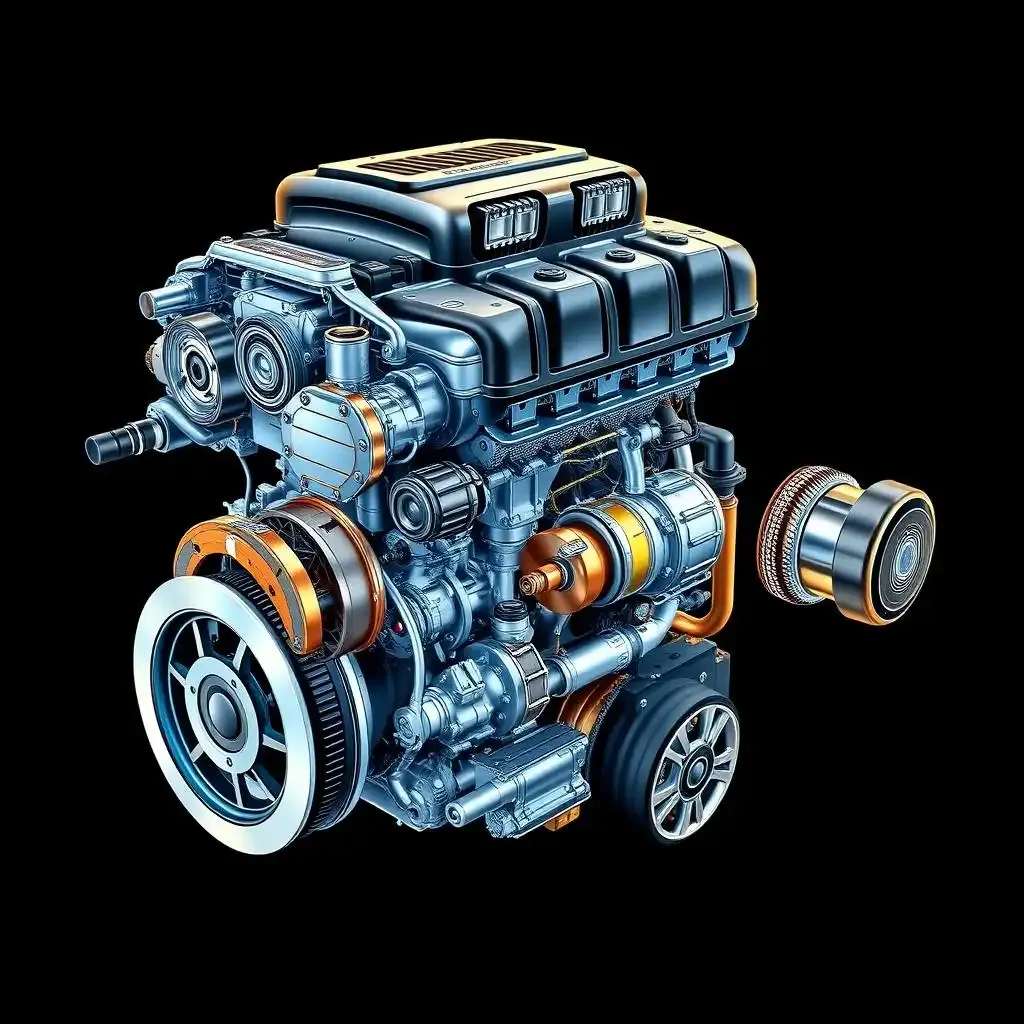Table of Contents
The 1st gen ford everest isn't just another SUV; it's a story of rugged practicality and a keen understanding of the Asia-Pacific market. Born from the robust underpinnings of the Ford Ranger pickup, this mid-size SUV carved its niche as a dependable, seven-seater capable of handling both city streets and rougher terrains. If you're looking for a vehicle that balances utility with a no-nonsense approach to engineering, the 1st gen Ford Everest might just be the machine that matches your needs. In this article, we will explore the vehicle's origins, its key features, and how it has stood the test of time, all while answering the question: what makes the 1st gen Ford Everest a compelling choice for those in the market for a used SUV? We will investigate into its design, its powertrain, and the real-world experiences of those who have owned and driven this capable machine. So, buckle up, and let's explore this off-road warrior from Ford.
Feature | Details |
|---|---|
Model | 1st Generation Ford Everest |
Production Years | 2003 onwards (with a major facelift in 2007) |
Platform | Based on the Ford Ranger pickup truck platform |
Target Market | Primarily the Asia-Pacific region |
Seating Capacity | 7 passengers |
Key Features | High ground clearance, four-wheel drive, rugged design |
Engine Option | 3.0 TDCi 4x4 engine (115 kW/156 hp) |
Drivetrain | Four-wheel drive |
Maintenance | Reportedly easy and inexpensive to maintain |
Overall Impression | Practical, reliable, and a capable workhorse. |
The Genesis of the 1st Gen Ford Everest: A Rugged Beginning

The Genesis Of The 1st Gen Ford Everest A Rugged Beginning
Okay, so think about this: it's the early 2000s, and Ford is thinking, "Hey, people in Asia need a tough SUV, but not just any SUV, a seven-seater that can handle anything." That’s where the 1st gen Ford Everest comes into the think about. Now, instead of starting from scratch, they took the bones of the Ford Ranger pickup truck – a vehicle known for its ruggedness – and built the Everest on top of it. It's kind of like how a baker uses the same basic dough to make different types of bread; they used the same strong base to create something different. The Everest wasn't designed to be a fancy city slicker; it was made to be a workhorse, a dependable ride that could handle both the daily commute and a bit of off-road fun. I like to think of it as a trusty steed, ready for whatever experience you throw its way, instead of a prancing pony.
This first generation, which rolled out in 2003, was Ford's way of saying, "We get you, Asia-Pacific!" They knew that families needed space, and they needed a vehicle that could handle the varied road conditions of that region. This wasn't some global model slapped together; it was adapted to a specific need. The fact that it's based on a pickup truck platform tells you a lot. It wasn't aiming for a sleek, car-like ride. No, it was built to be tough, to take a beating, and to keep going. Think of it like a mountain goat, sure it might not be the prettiest animal, but it will get you to the top of the mountain.
Key Aspect | Details |
|---|---|
Origin | Built on the Ford Ranger pickup truck platform |
Target Market | Asia-Pacific region |
Initial Launch | 2003 |
Primary Design Goal | A tough, seven-seat SUV |
1st Gen Ford Everest: Design, Features, and a 7Seat Setup

1st Gen Ford Everest Design Features And A 7seat Setup
Alright, let's talk about the looks and the stuff inside the 1st gen Ford Everest. It's not going to win any beauty contests with its boxy shape, but it's like a dependable brick – it's solid and does the job. This SUV isn't trying to be sleek or aerodynamic; instead, it's all about being practical and functional. Think of it as a Swiss Army knife of vehicles; it might not be the prettiest tool, but it has got a lot of tricks up its sleeve. The design is straightforward, with big windows, a high roofline, and a lot of space inside. It's built for families and folks who need a vehicle that can handle a lot of people and stuff.
One of the biggest selling points of the 1st gen Everest is its ability to seat seven people. Yes, you heard that right, seven! It's like having a mini-bus but with the ruggedness of an SUV. This makes it perfect for big families or for those who often travel with friends. The seats aren't fancy, but they are comfortable enough for long journeys. And because it's based on a pickup truck, it's got a high ground clearance, which means you can see over traffic and tackle those rough roads without too much worry. It's like having your own little fortress on wheels. You're not going to find a ton of fancy tech features, but you'll find plenty of space, and that's what this vehicle was designed for.
Feature | Description |
|---|---|
Design | Boxy, practical, high roofline |
Seating | 7-seater capacity |
Ground Clearance | High, suitable for rough roads |
Interior | Spacious and functional, not luxurious |
Under the Hood: Exploring the 1st Gen Ford Everest's Engine and Drivetrain

Under The Hood Exploring The 1st Gen Ford Everests Engine And Drivetrain
The Heart of the Beast: Engine Options
Okay, so we've talked about the outside and the space inside, but what about the engine? Well, the 1st gen Ford Everest had a few different engines, but one of the most talked about is the 3.0-liter TDCi diesel engine. Think of it like this, the engine is like the heart of the car, it pumps strength to make the wheels turn. This particular engine wasn't the most powerful, but it was dependable. It made around 156 horsepower, which is like having 156 horses pulling the car. Now, that might not sound like much compared to some fancy sports cars, but for an SUV designed to carry people and stuff, it was more than enough to get the job done. It’s like having a reliable workhorse instead of a racehorse; it’ll get you there, even if it's not the fastest.
Capability to All Wheels: The 4x4 System
Now, what's the point of having a strong engine if you don't have a way to put that strength to the ground? Well, the 1st gen Everest came with a four-wheel-drive system, or 4x4. Think of it like this: instead of just the front or back wheels getting the ability, all four wheels get it. This is super useful when you're driving on slippery roads or going off the beaten path. Imagine a team of four horses pulling a wagon, instead of just two; it's a lot easier to move, right? This 4x4 system is what made the Everest a true SUV, not just a big car. It meant you could tackle muddy tracks and rough terrain without getting stuck, which was a big deal for folks living in areas where the roads weren't always perfect. The 4x4 system was one of the things that separated the Everest from the pack.
Engine Feature | Details |
|---|---|
Typical Engine | 3.0-liter TDCi Diesel |
Strength Output | Around 156 horsepower |
Drivetrain | Four-wheel drive (4x4) |
Purpose | Designed for reliability and off-road capability |
1st Gen Ford Everest: Owner Experiences, Reliability, and Maintenance
Okay, so let's get real. What's it like to actually own a 1st gen Ford Everest? Well, I've been digging around, reading what folks online have to say, and it seems like most owners have a soft spot for this tough SUV. They aren't raving about luxury or the latest tech, but they sure do talk about how reliable it is. It's like that old pair of boots you have that's seen better days, but you know they'll never let you down. People keep saying that the maintenance is pretty easy and cheap, which is a big plus. It's like having a pet that doesn't need to go to the vet all the time, saving you money and stress.
Many owners point out that the 1st gen Everest is built like a tank. It's not some delicate flower; it's a workhorse that can take a beating and still keep going. This is super important because if something breaks, it won't cost you an arm and a leg to fix. I saw a comment online where someone said it's like the "Toyota Hilux of SUVs," and that's saying something! It's not about having the most cutting-edge features, but about having a vehicle that's ready for anything. Think of it as that friend that’s always there for you, no matter what, and never complains.
Aspect | Owner Feedback |
|---|---|
Reliability | Generally considered very reliable. |
Maintenance | Easy and cheap to maintain. |
Build Quality | Rugged and durable, "built like a tank." |
Overall Impression | Praised for dependability and practicality. |
Of course, it's not all sunshine and rainbows. Some owners mention that the ride can be a bit bumpy, especially if you're used to driving a car. It's like comparing a smooth sailboat to a sturdy tugboat; one glides, the other works. And, yeah, the interior isn't super fancy. It's more about function than style. But, for most people who own this car, that doesn’t seem to be a big problem. They seem to love the fact that it's a practical SUV that can handle all sorts of conditions and situations, and that's what matters most.
I've also seen a few owners talk about how they use their 1st gen Everest for all sorts of things, from hauling their families on road trips to going off-roading. It's like a multi-tool that can do a lot of things, not just one. It's a testament to the simple, but effective design that it can be both a family car and an off-road vehicle. It's not trying to be something it's not; it's just a capable SUV that can do its job well. One owner even said, "It's not the prettiest, but it's always there when I need it," and I think that sums it up nicely.
The Enduring Legacy of the 1st Gen Ford Everest
The 1st gen Ford Everest, while not the flashiest SUV on the road, possesses a unique charm and appeal. It's a vehicle built for purpose, designed to tackle demanding conditions with a straightforward approach. Its robust build, coupled with the practical 7-seat layout, means it offers something that many modern SUVs have traded in for more style. The Everest's reliability and ease of maintenance, as reported by owners, solidify its reputation as a workhorse. It's not about the latest technology or high-end luxury; it's about providing a dependable, no-frills vehicle that gets the job done. For those seeking a used SUV with a proven track record, the 1st gen Ford Everest presents a compelling case, proving that sometimes, the simplest designs are the most effective. It is a testament to Ford's understanding of regional needs and the desire for durable, practical transportation. Its legacy endures, reminding us that practicality and reliability can be just as desirable as the newest bells and whistles.